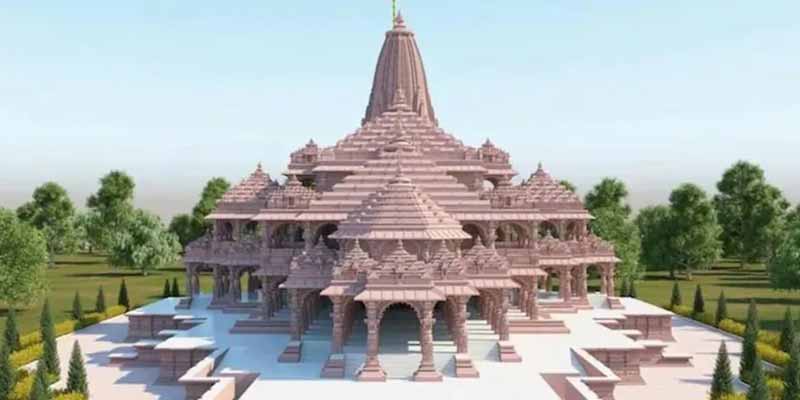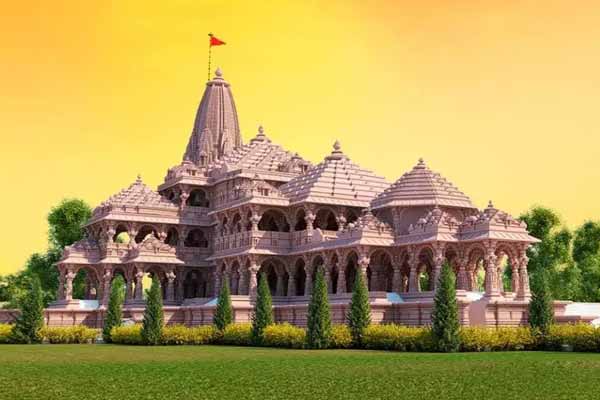Ayodhya Travel Guide Ayodhya Quoted to be the “invincible land” the “cradle of mythology” and the “religious land” of India Ayodhya is synonymous with Lord Rama. Described as a city built by the Gods, the city of Ayodhya was originally known as Kosaladesa. Further renamed as Raghuvansa it finally came to be known as Ayodhya. The history and mythology of this city spreads over many centuries. Ayodhya is better known as the birth place of Lord Rama
Ayodhya is located in the district of Faizabad in Uttar Pradesh. Ayodhya is situated on the bank of the River Saryu. Ayodhya is about 140 km from Lucknow, the capital city of Uttar Pradesh.
Ayodhya is a city of temples yet, all places of worship here, are not only of the Hindu religion. The city has seen the birht and growth of many religions within its boundaires such as Jainism, Buddishm and Islam. Remanants of these religioins can still be found in Ayodhya.
The main tourist attraction of Ayodhya was the Babri Masjid (Mosque), built by the Mughal king Babur. Unfortunately, the traveler can no longer see this monument as it was demolished in the riots that took place here in 1992. It is said that Ayodhya has 7000 temples, but there are some 100 temples of relative significance. Near the remains of the Babri Masjid, the traveler can see the Ram Janmabhumi (birthplace of Lord Ram) shrine. It is believed that Lord Ram spent much of his childhood here.
Other places to visit in Ayodhya are Lakshman Ghat, Kala Ram temple and the Kanak Bhavan temple, which was built in the 19th century. There are several Jain shrines in Ayodhya Travel Guide. One kilometer east of the Ram Janmabhumi shrine is Hanumangadhi (Fortress of Hanuman, the revered monkey god and friend/devotee of Lord Ram). It is said that Lord Hanuman lived in a cave nearby to protect the Ram Janmabhumi

History Of Ayodhya
Skand and some other Puranas rank Ayodhya as one of the seven most sacred cities of India. It was the venue of many an event in Hindu mythology, today pre-eminently a temple town, Ayodhya is also famous for its close association with the epic Ramayana. It is a city of immense antiquity full of historical significance and sacred temples. The Atharvaveda described Ayodhya as `a city built by Gods and being prosperous as paradise itself’ Religious Places in Rajasthan.
The illustrious ruling dynasty of this region were the Ikshvakus of the solar clan (Suryavansa). According to tradition, Ikshvakus was the eldest son of Vaivasvata Manu, who established himself at Ayodhya. The earth is said to have derived its name `Prithivi‘ from Prithu, the 6th king of the line. A few generations later came Mandhatri, in whose line the 31st king was Harischandra, known widely for his love of truth Ayodhya Travel Guide.
Raja Sagar of the same clan performed the Asvamedha Yajna and his great grandson Bhagiratha is reputed to have brought Ganga on earth by virtue of his penance. Later in the time came the great Raghu, after whom the family came to be called as Raghuvamsa. His grandson was Raja Dasaratha, the illustrious father of Rama, with whom the glory of the Kausala dynasty reached its highest point. The story of this epic has been immortalized by Valmiki and immensely popularized by the great masses through centuries Rajasthan Budget Tours.
Major Attractions in and Around Ayodhya
- Ram Janma Bhoomi
It is believed that Lord Rama was born here as the seventh Avatar of Lord Vishnu. If you want to feel the nostalgia associated with the glorious Hindu Itihaas then Ramjanma Bhoomi won’t disappoint you at all. In fact, it is a wonderful place to visit and spend some amazing time with your family and friends. This place will surely remain in your heart forever Ayodhya Travel Guide.
- Hanuman Garhi
Dedicated as a worshipping place to Lord Hanuman, this temple is an amazing religious tourist destination. The glory of this temple is known in the entire Northern-India. And interestingly, there is a custom associated with this temple. As per the custom, a person has to first receive darshan here before heading to the main temple dedicated to Lord Ram.
- Nageshwarnath Temple
As per the legends, it is believed that this temple was founded by Lord Ram’s son Kush. It is said that once, Kush lost his armlet while taking a bath in the Sarayu River. This same armlet was picked by one of the Nag-Kanyas who fell in love with him and as she revered Lord Shiva, Kush erected a whole temple for her.
- Awantika
A wonderful place for the foodies where one can enjoy scrumptious meals ranging from Chinese to Italian to Indian cuisines. The best part you’ll realize here; the restaurant fits best in your pocket Ayodhya Travel Guide.
- Bahu Begum ka Maqbara
This is a tomb of Queen Begum Unmatuzzohra Bano. This is one of the tallest buildings in the entire Faizabad and is a worthy example of non-Mughal architecture style.
- Gulab Bari
With an immense collection of roses and beautiful water fountains, the Tomb of Gulab Bari is fundamentally a maqbara of the Nawab Shuja-ud-Daula. It is a great place for history buffs to learn something new and interesting about our country’s past.
How To Reach
The city of Ayodhya carries great significance historically. It is believed to be the birthplace of Lord Rama. From Delhi, Bengaluru, Kolkata and Mumbai it is located at an approximate distance of 688, 1,899, 873, and 1,512 km respectively. Let’s see how you can reach Ayodhya Travel Guide via the following routes.
By Air – Ayodhya is well connected with other places by road, as it is located on the main highway, which runs through the town on the way from Faizabad to Gorakhpur. There are frequent tempos and buses shuttling along the highway from Faizabad to Ayodhya.
By Rail – Ayodhya does not have a railway station and one has to go to Faizabad to catch trains. Lucknow, Allahabad and Gorakhpur are connected by rail with Faizabad. We would provide you all India tourist permit vehicles for the local transportations and also for the intercity drives too.
